Last month an A.I. enthusiast who uses the handle “MrUgleh” posted the above image--a digital imitation of a painting of a presumably medieval village, the alternately shadowed walls of whose buildings form an eerie spiral--to the subreddit devoted to the generative A.I. app Stable Diffusion. It was upvoted 4,400 times; from Reddit, it jumped to X, where it was shared by an account called “DeepFates,” one of the many A.I.-influencer accounts that now populate the site. DeepFates’ X post got 9 million views (however X calculates “view”) and 1,300 re-X’s.
“Spiral Town,” as MrUgleh titled the work, was not the first A.I.-generated image to go viral. But it for many people it seemed to be the first piece of “A.I. art” they were able to take seriously. “Going through the 7 stages of grief after learning this was ai 💀,” someone X’d. “This was the point where AI-generated art passed the Turing Test for me,” wrote the widely read investor and tech blogger Paul Graham.
Why “Spiral Town”? What about this image--as opposed to the many others created by the burgeoning “A.I. art” community1 forming on Reddit and Discord and X--provoked this kind of response? I don’t know precisely what Graham meant by “The Turing Test” in this case, but is surely not the first A.I.-generated image to pass on first glance as one painted or drawn by a human. And on closer inspection, “Spiral Down” displays a number of the tell-tale signs of art generated by a large language model like Dall-e or Stable Diffusion: Incorrect shadows, physically impossible buildings, and small malformed details, like the garbled muntins in some of the windows. On a purely technical level, in terms of how obvious its origin is, there’s not much that separates this from other A.I. generated images.
But on some other level “Spiral Town” does--or did--stand out from the kind of “A.I. art” that tends to find wide circulation online. One reason, obviously, is that most “A.I. art” looks like this:2
This is an image of “Mona Lisa painting a portrait of Leonardo da Vinci,” created by an “entrepreneur, artist, tech geek” whose profile links to a site where you can buy a $10 PDF that teaches you “how to use Midjourney to generate high quality images that evoke a whole range of emotions.”
Like a lot of A.I. art, it’s easy enough on the eye, technically flawless, and superficially clever and provocative--but it has nothing to offer its audience beyond flattery and comfort and the sense of having been moved without any of the actual emotional or intellectual movement. It is, in other words, kitsch.3
Most social media-borne A.I. art is kitsch. (Or, if you prefer, “high quality images that evoke a whole range of emotions.”) This is in part a function of the people creating it: blue-checks on X and other kinds of “influencers” whose main goal is to make popular images as a marketing tactic for some other business, like A.I. newsletters, or even just for the X dot com engagement payout. Kitsch, by virtue of its superficial beauty and self-flattering concepts, comes pre-lubricated for social-media circulation; it’s by definition the art that it’s easiest for people to like.
But it also seems to me that text-to-image models are prone to generating kitsch themselves, regardless of who’s writing the prompts. After all, what they produce is a kind of weighted average of the images they’re trained on; and what is kitsch but a kind of aesthetic average? As Hito Steyerl writes, “Visuals created by [machine learning] tools are statistical renderings… They converge around the average, the median; hallucinated mediocrity.” This effect is exacerbated further by the guardrails the developers build--almost the last thing any A.I. company wants is for its app to produce “challenging” output.
It’s in this sea of glurge that “Spiral Town” was able to stand out. I don’t want to argue that the image is definitively not kitsch, let alone a great or even “challenging” piece of art--certainly not with that title. But even if it doesn’t challenge its viewer, precisely, it withholds something--its meaning is less immediately obvious, its aesthetic pleasures somewhat more complicated. There is a sensibility and character at work beyond reversion to the mean, and if you saw it hanging on the wall at a show of minor and forgotten surrealists, or found it as an illustration in an out-of-print book--or were told it had been painted by an outsider or self-trained artist, as indeed it sort of was--you might linger over it.4
One of the interesting things about the world of “A.I. art” is how quickly and easily ideas and aesthetics spread. This can partly be chalked up to the environment in which the images are circulating, where viral success is prized over novelty or originality, and partly to the technology, which allows the production and reproduction of images without requiring time-consuming practice or training. “Spiral Town” was created using “ControlNet,” a Stable Diffusion model that allows users to increase their control over the app’s final output by introducing visual parameters. Instead of just typing in a text prompt and tweaking until you get something close to what you’re looking for (“painting of a medieval village, clouds, roofs”), with ControlNet you can upload a reference image--like, say, a spiral--whose outlines the large language model will attempt to reproduce in the output.
The existence of ControlNet allowed anyone with a facility for Stable Diffusion to mimic “Spiral Town.” And, believe me, people did: Almost immediately after MrUgleh’s image went viral, his technique was everywhere:

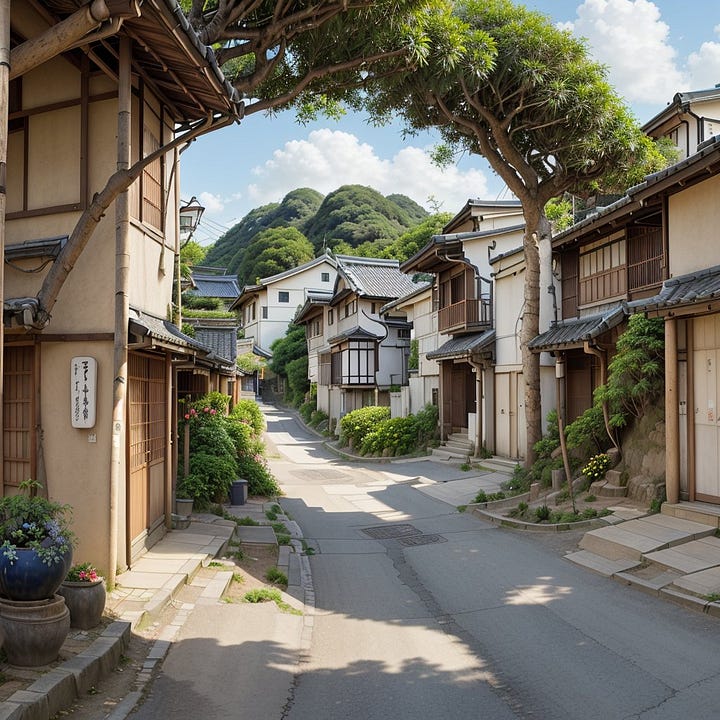
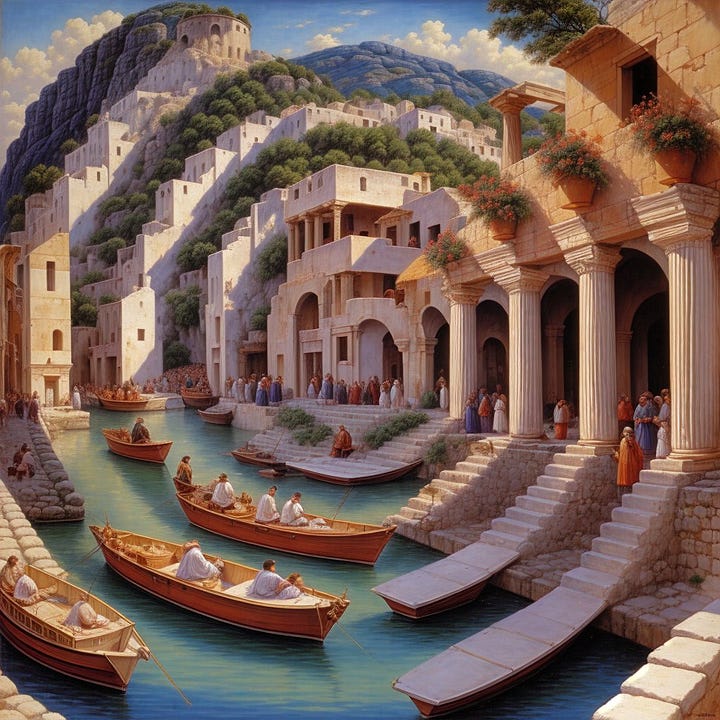
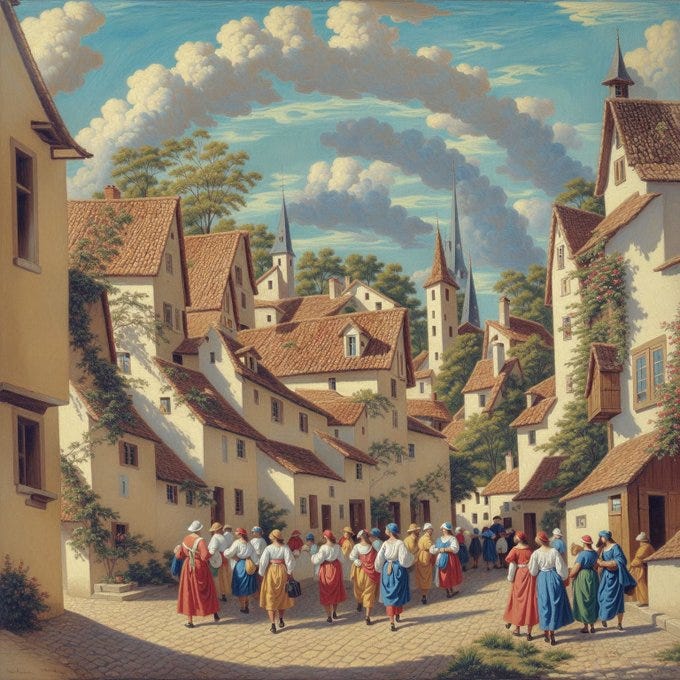
Since “Spiral Town,” huge numbers of images produced using ControlNet, often containing “hidden” patterns or messages, have been circulating on X and Reddit and Discord, examples of a burgeoning genre or school of A.I. art called “Controlism.” One particular viral Controlist technique is adding text to images in unexpected ways:
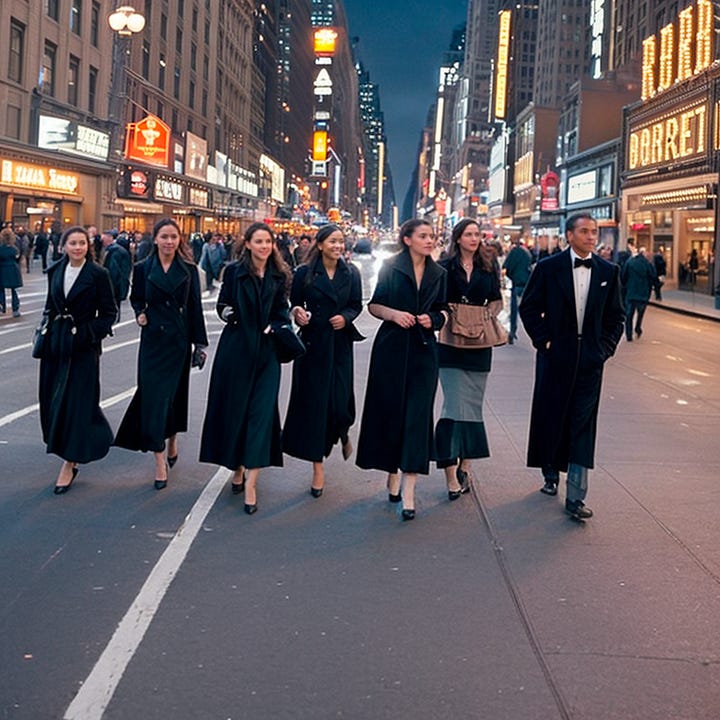
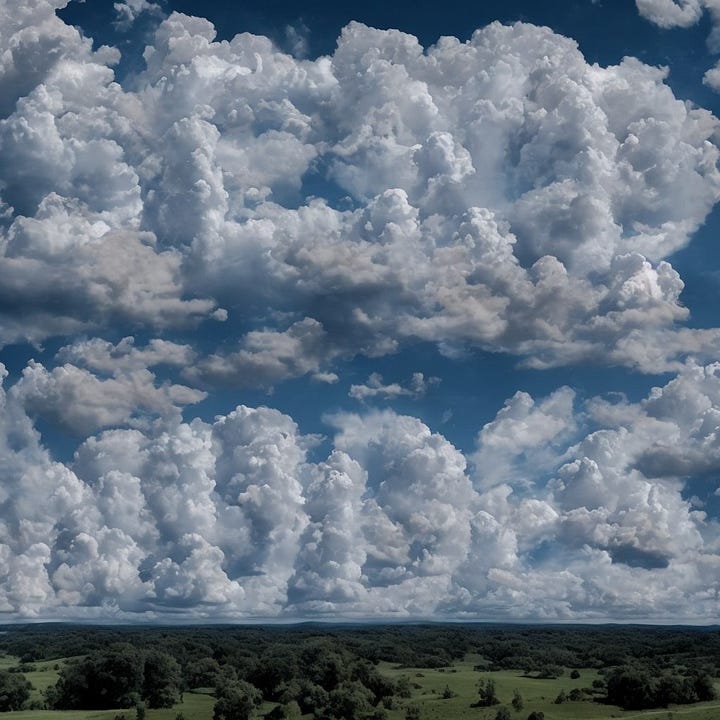
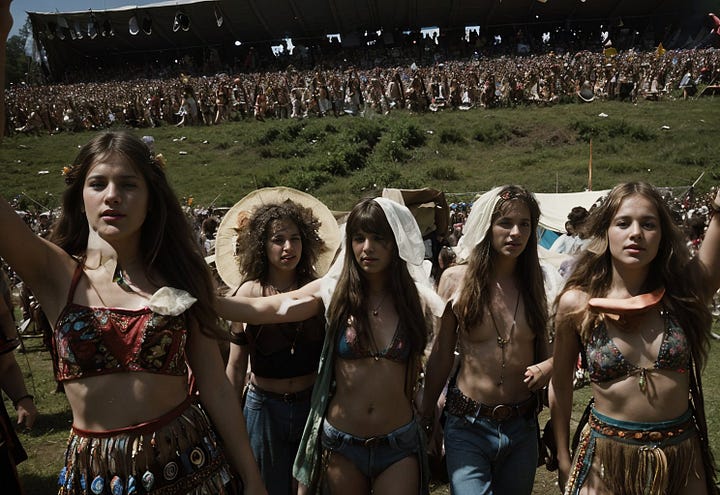

The irony, of course, is that none of the aspects of “Spiral Town” that made it distinct or surprising survived in the imitators. In fact, the popularity of “Controlism” suggests that what made “Spiral Town” stand out to many of the A.I. artists and influencers that shared it wasn’t the mysterious or withholding quality that allowed it to resist its own kitschiness, but the technically impressive and seemingly clever concept and execution--that is, the kitsch.5
Perhaps this reveals something about how the A.I. influencers on X and elsewhere think about art--as clever concepts to be shared, or puzzles to be solved. But I think it probably tells us more about how they think about A.I. Given the almost religious awe with which large language models are treated by the tech industry is it surprising that the avant garde of A.I. art is A.I.-inserted subliminal messages and suggestively hypnotic spirals?6
There are many professional artists experimenting with using A.I. in their practice in one form or another, but since the public debuts of Dall-e, Midjourney, and Stable Diffusion (and other, less well-known text-to-image models), a large and enthusiastic community of amateur or outsider A.I. artists has formed on Reddit, Discord, and Twitter/X, sharing work and swapping tips for writing good prompts to the machines that generate the images. This latter group is producing what I think of as “A.I. Art,” which to me refers to images created entirely through prompts and models.
Not all A.I. art looks like that, of course; some of it looks like this:
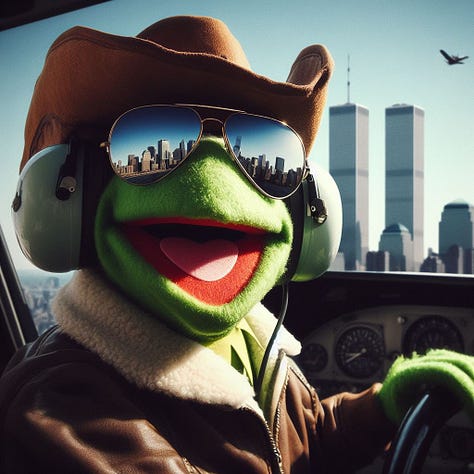


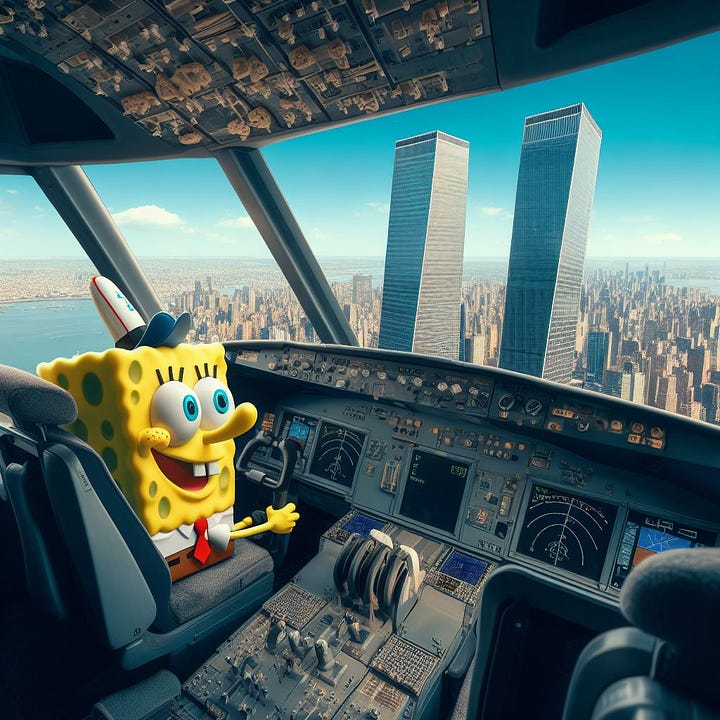
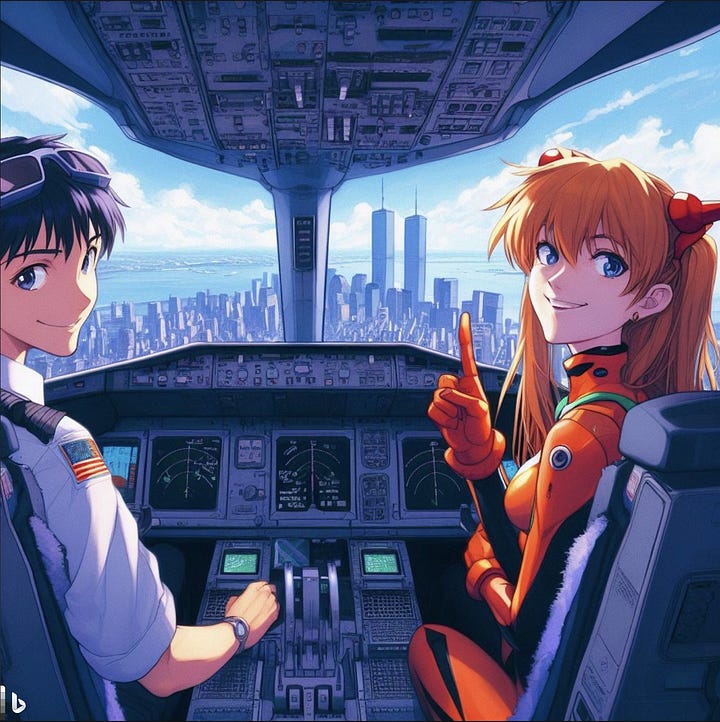
And, look, setting aside how contemptuously stupid the concept actually is, the woman painting Yassified da Vinci doesn’t even look like Mona Lisa; she looks like Mila Kunis.
Granted, “in a completely different context you might have a different reaction to this work” is not a wildly compelling argument for its worth.
Again, I don’t want to overstate the quality of “Spiral Town.” But comparing it to its imitators is instructive in seeing the difference between pure kitsch and something that provides at least a small handhold for interpretation and meaning.
There’s also shitposting, obviously:


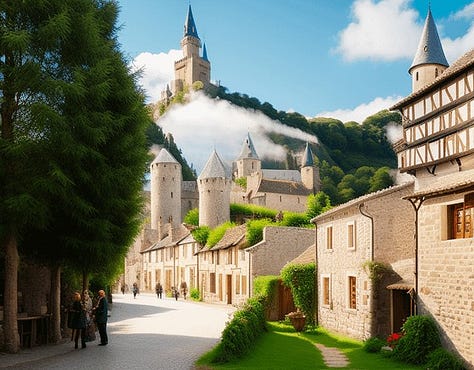
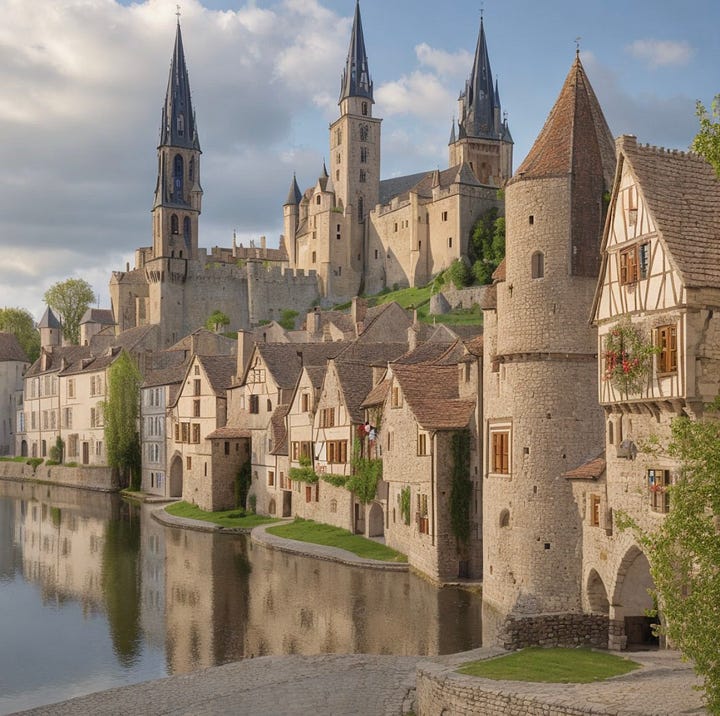






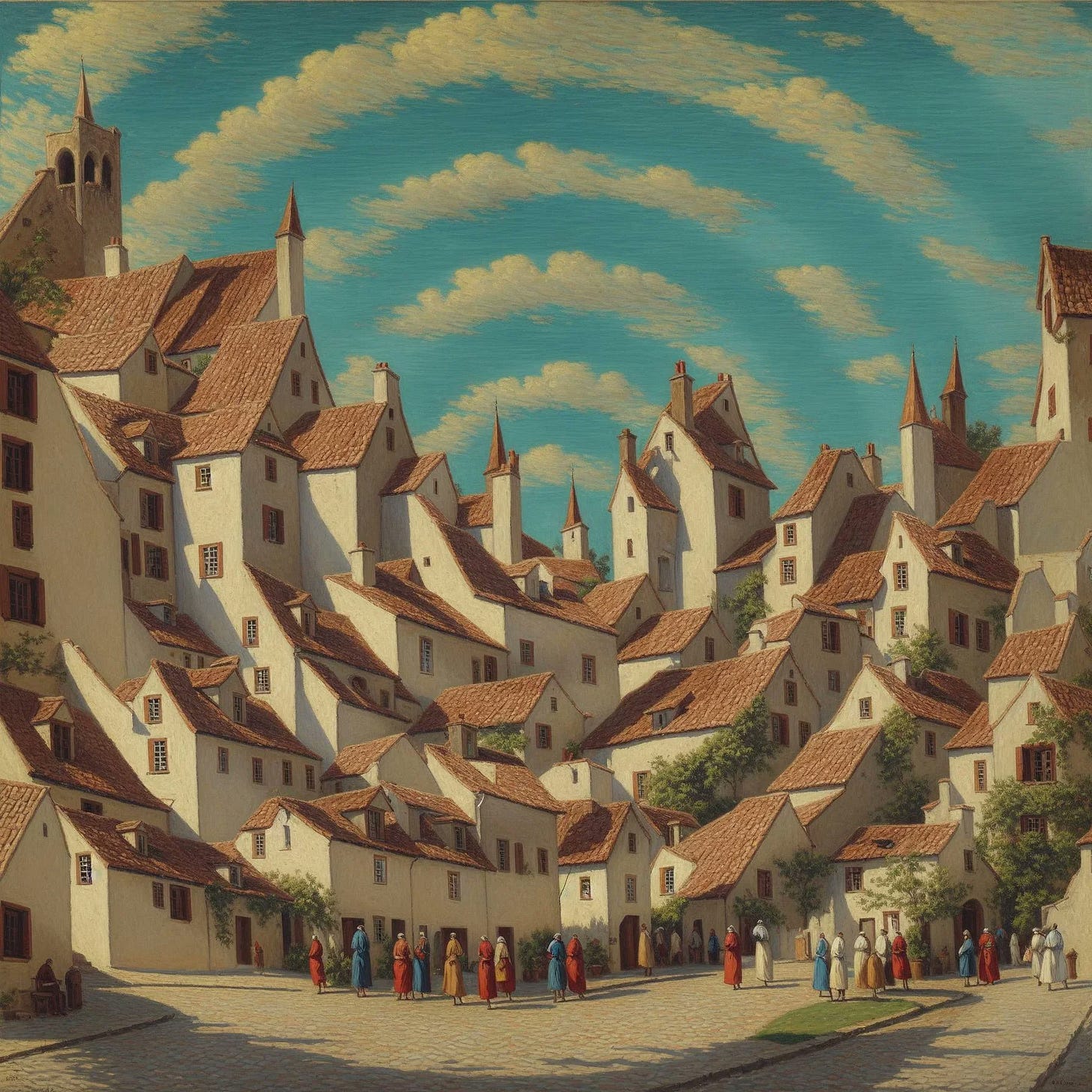

I really appreciate you framing most AI art as kitsch--that’s an illuminating way to think of it. I went on a deep dive of the AI art subreddits after DALLE 3 came out and the number of people saying computers are more creative than humans now while presenting the most absolutely cringey cliche images made me really bummed out.
You know I will give these people the bare minimum credit: Spiral Town is better than Beeple Everydays or Pudgy Penguin #1738, the art they were appreciating this time two years ago.